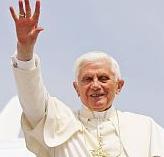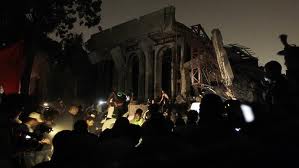 by Nebojsa Malic – Gray Falcon
by Nebojsa Malic – Gray Falcon
Pope Bendict XVI just wrapped up a visit to Croatia today. While Catholic reporters emphasized the pontiff’s message about the importance of family, a few reporters here and there noted the controversial praising of Cardinal Aloysius Stepinac.
Roman Catholics may believe their pontiff is incapable of error on matters religious. He definitely can – and does – err on matters historical. Far from being “manipulated by Hitler for his own ends,” the so-called Independent State of Croatia (1941-45) was considered at the time the crowning achievement of Croatians’ legitimate aspirations to statehood. That very opinion has been shared by all the governments of modern Croatia, from its independence in 1991 onward.
Nor was Cardinal Stepinac a defender of Serbs and Jews, as the Pope alleged, but rather the personal vicar to Croatia’s fuehrer, Ante Pavelic. The ideology of Pavelic’s Ustasha was inseparable from Catholic chauvinism, and its persecution and genocide of Orthodox Serbs was entirely based on religion. One part of the program of pogrom was to coerce into conversion a third of the Serb population – including the children orphaned by Ustasha murders. Catholic clergy not only blessed the Ustasha, but many personally participated in the murdering. Unlike Hitler’s murder machine, designed to be impersonal and efficient, the Ustasha took visceral pleasure in their killing – using mallets, knives, pistols and picks. Even the Nazis were disgusted.
At the end of the war, with the Communists taking power in Yugoslavia, top Ustasha officials – including Pavelic himself – escaped to Western Europe, the US and Latin America, thanks to the Catholic Church.
Stepinac was jailed for five years by the Communist authorities, then held under house arrest until his death in 1960. Given that many in Yugoslavia had been shot for much lesser crimes, Tito’s regime was actually exceptionally lenient towards Pavelic’s vicar and the Church of Rome. Which, by the way, never offered an apology for mass murder and forced conversions. Or the fact it supported precisely the same scenario for the Serbs in the 1990s.
Now comes the ironic twist. Right after the pontiff’s visit, Zagreb announced that it will hold a Gay Pride Parade on June 18. The motto of the event is “Tomorrow belongs to us.” If that sounds familiar, here’s why.

